When Justin first contacted me to get some information about left-handed reloading techniques for revolvers, I thought, “great; I have two approaches that I use, and I’ve never seen them laid out clearly.” The first of these, a generic Left-Handed Revolver Reload, was shared with you a while back. Because of some changes we had to make with that article, I pulled out my copy of Defensive Revolver Fundamentals by Grant Cunningham. I quickly discovered that I am not the visionary that I thought. The second of the two techniques I wanted to share with RevolverGuy.com readers was actually the left-handed version of Grant’s Universal Revolver Reload (URR). True to our tag-line, I had re-invented the wheel. That’s OK; Grant’s technique is definitely worth sharing, and I feel I can add a couple of additional insights along the way.
Universal Revolver Reload – Left-Handed: Getting Started
The left-handed URR starts by grasping the cylinder between the thumb and fingers of the right hand from below, then using the trigger finger to release the cylinder.
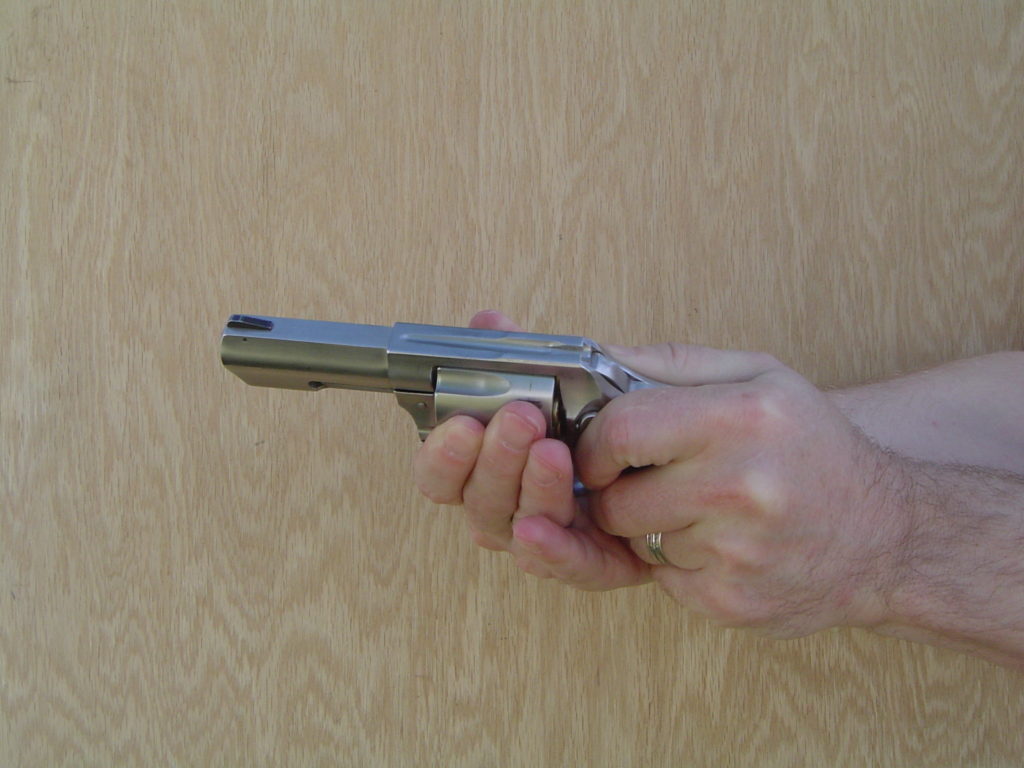
This is the area where my execution of the technique differs most. I prefer to initially maintain my shooting grasp and simply point my thumbs forward along the center line of the cylinder. I have never been a thumbs-forward semi-auto shooter, but the position is similar to that technique. For me, using this approach feels slightly faster (though probably not enough to matter), retains a better grasp on the gun as my trigger finger moves, and (perhaps most importantly) reduces my tendency to turn the gun to the right as I open the cylinder.
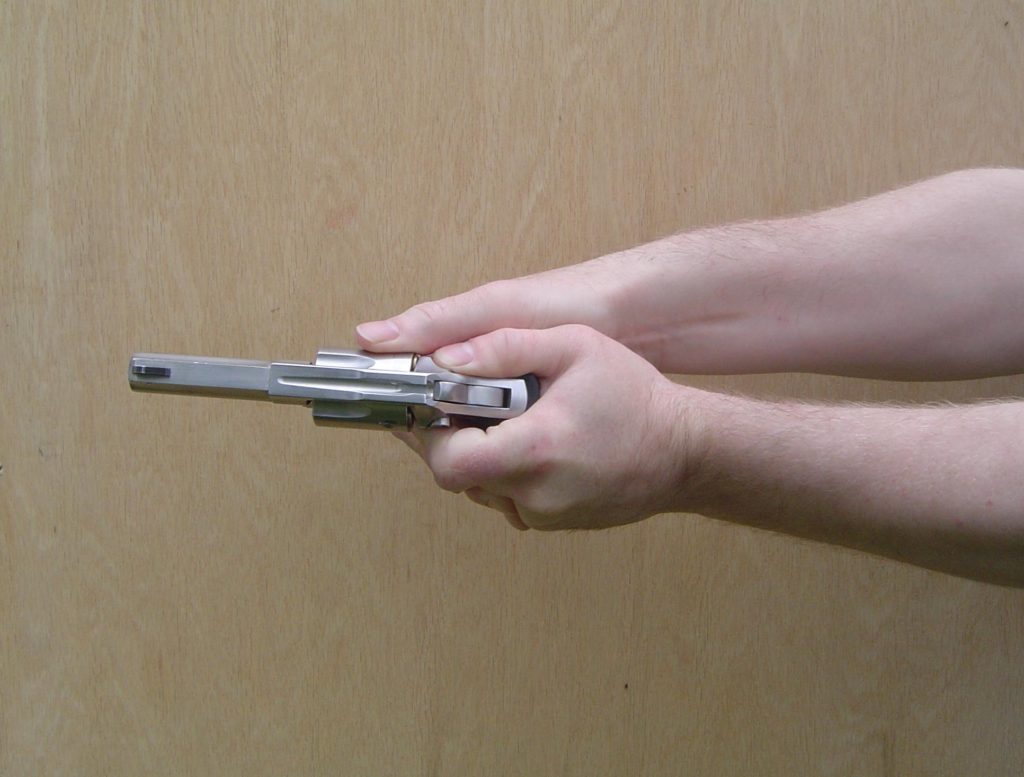
Push, Pull, or Drag Press It In
Pulling back the trigger finger far enough to use the pad of the finger on the release requires a significant shift in hand position and can be a little awkward. Grant depicts this position with a Smith & Wesson, but also advises using the second knuckle and/or the middle bone of the finger for Rugers. This is the position that I prefer.
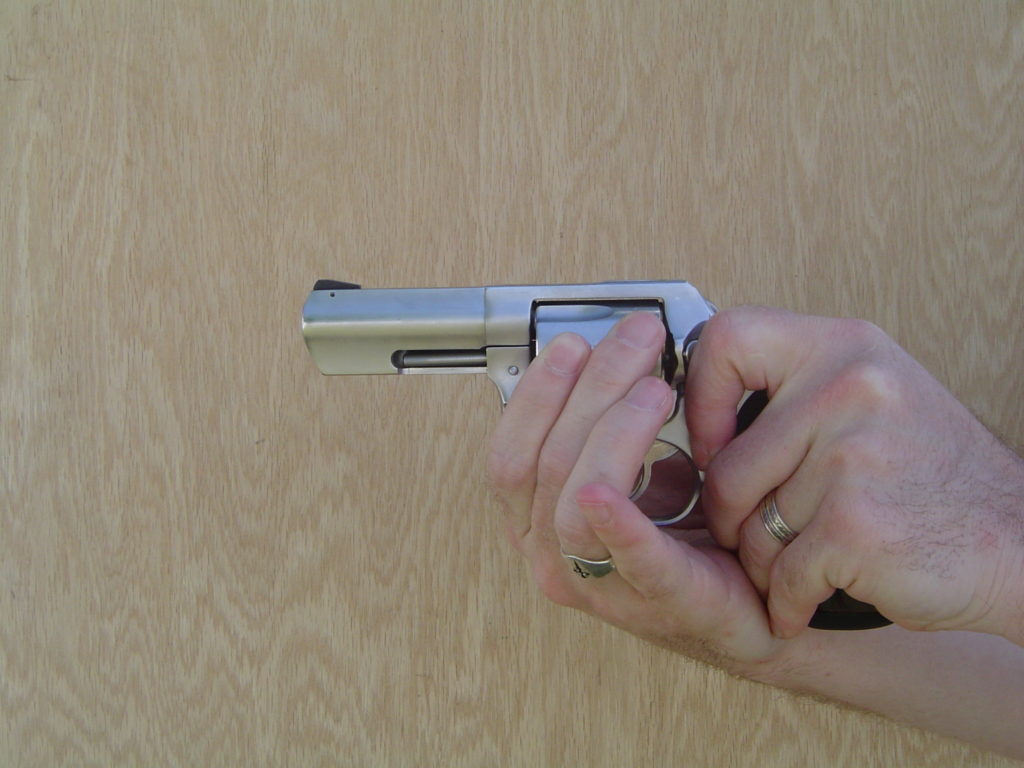
Not only will this approach allow you to reach the latch more easily, it has the added benefit of placing the tip of my finger in about the same spot that it would be when dropping the magazine on my semi-autos. For this reason, the left-handed URR may be of particular interest for Lefties who also shoot a bottom-feeder.
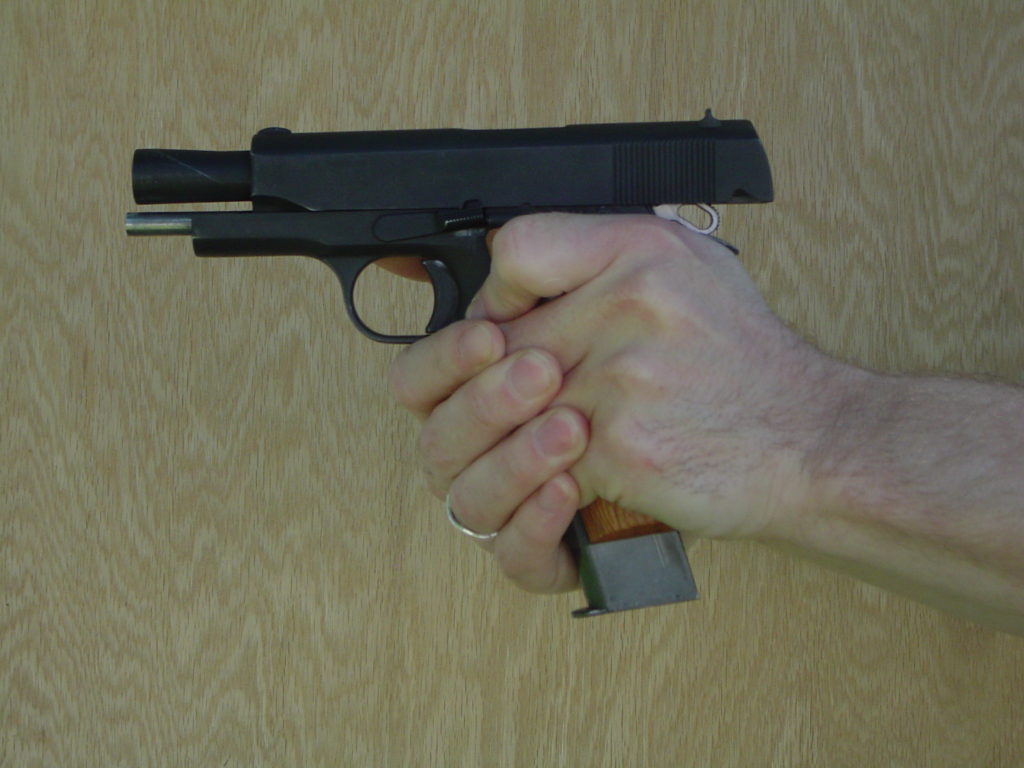
If you pointed your thumbs forward, as I do, you have already placed the left thumb opposite the trigger finger. Pinching the two together gives a good grip on the release. Grant mentions using the thumb if needed, but does not emphasize it as much as I do. I think this may contribute to his implication that the left-handed URR can be more difficult with Colt-style latches. If you are shooting a Ruger or Kimber, the pinch is enough to release the cylinder. If you are shooting a Colt or Smith & Wesson, you will have to push or pull the release as appropriate for your gun. I find that having the tip of my left thumb against the recoil shield provides additional rear-ward pressure for a more positive release of Colt-style latches.
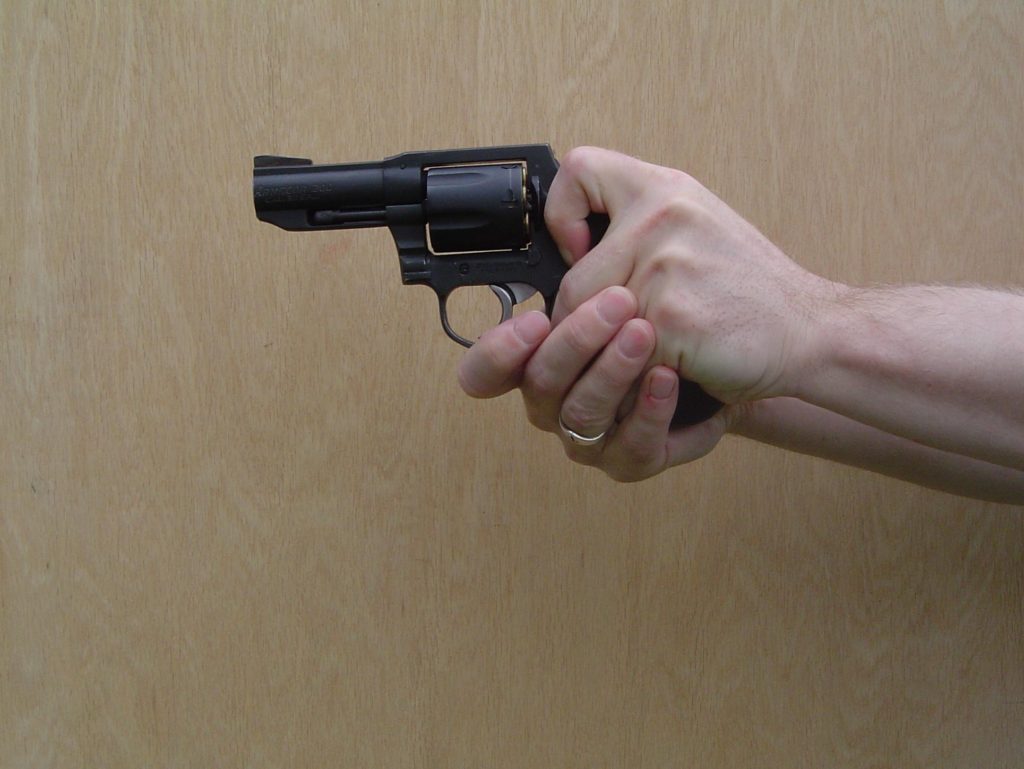
Smith & Wesson Considerations
As mentioned above, one of the downsides to this technique is that using the trigger finger on Smith & Wesson-style latches, especially the newer angled latches, is somewhat inconvenient. The trigger finger must be pulled further back in order to get a good purchase on the latch. Then the finger must stop and push the opposite direction. In addition, the angled latches place a sharp edge against the finger that becomes uncomfortable very quickly. Because most of my guns are Rugers, I would continue to use my trigger finger with Smith & Wesson-style latches, but I might see about having newer latches changed to the flat type. That would at least remove the discomfort. If you use a revolver with a Smith-style latch consistently, it may be more effective to bring the left thumb over the frame to push the release as is done in the left-handed version of the StressFire Reload.
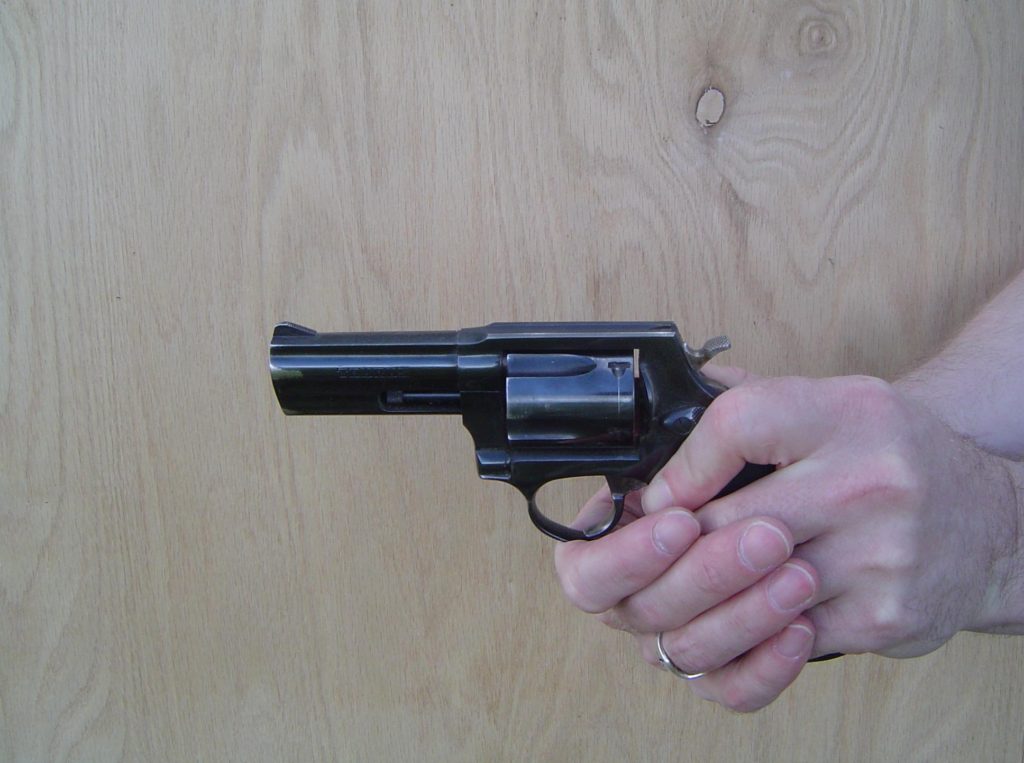
Holding the Cylinder
The right thumb is used to push the cylinder open and simply follows it. This places your right thumb through the frame window and your other fingers around the trigger guard. In doing so, we have to be careful to keep the ring and pinky fingers away from the cylinder so that they do not interfere with the ejection of spent brass. You can simply straighten these fingers to keep them out of the way, but I have discovered that I occasionally wrap them behind the trigger guard to help pull the hand away from the forcing cone on smaller-framed guns. Placing the first two fingers around the cylinder helps keep it from rotating which could allow your thumb to slip back off. Downward pressure from the thumb and upward pressure from the palm hold the cylinder stationary.
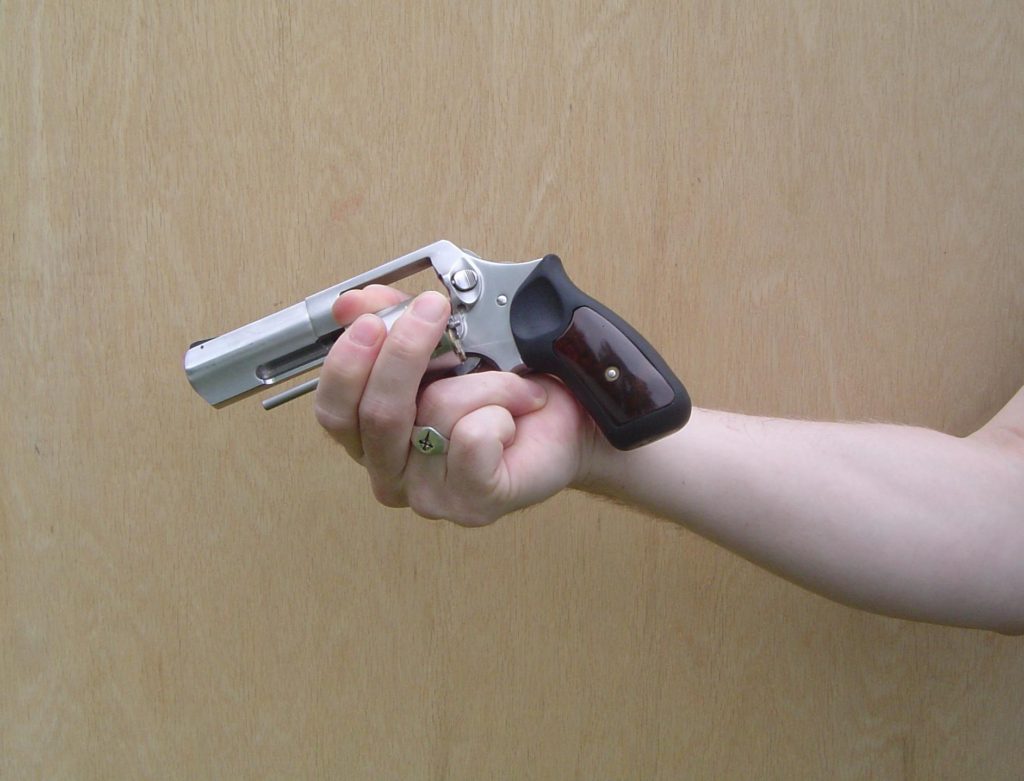
Reloading
The gun can now be rotated muzzle-up and the spent rounds ejected with a quick strike on the end of the ejector rod. If you keep the wrist of the right hand straight, it will likely be easier to use the palm of the left hand between the thumb and index finger to hit the ejector rod. If you prefer to use the heel of the left hand to eject spent rounds, simply bend the right wrist to the left.
Once clear of brass, the revolver can be pointed muzzle-down to recharge it. I feel that the URR’s grasp on the cylinder is slightly more natural and stable than that traditionally used in the StressFire Reload. On the other hand, it is not as convenient for getting the gun fully vertical when pointed down. In order to help improve the orientation of the gun during the reload process, I let my middle finger come off of the cylinder while turning the revolver down. This provides just a little more rotation to the gun without sacrificing much control. The cylinder can now be reloaded with fresh cartridges.
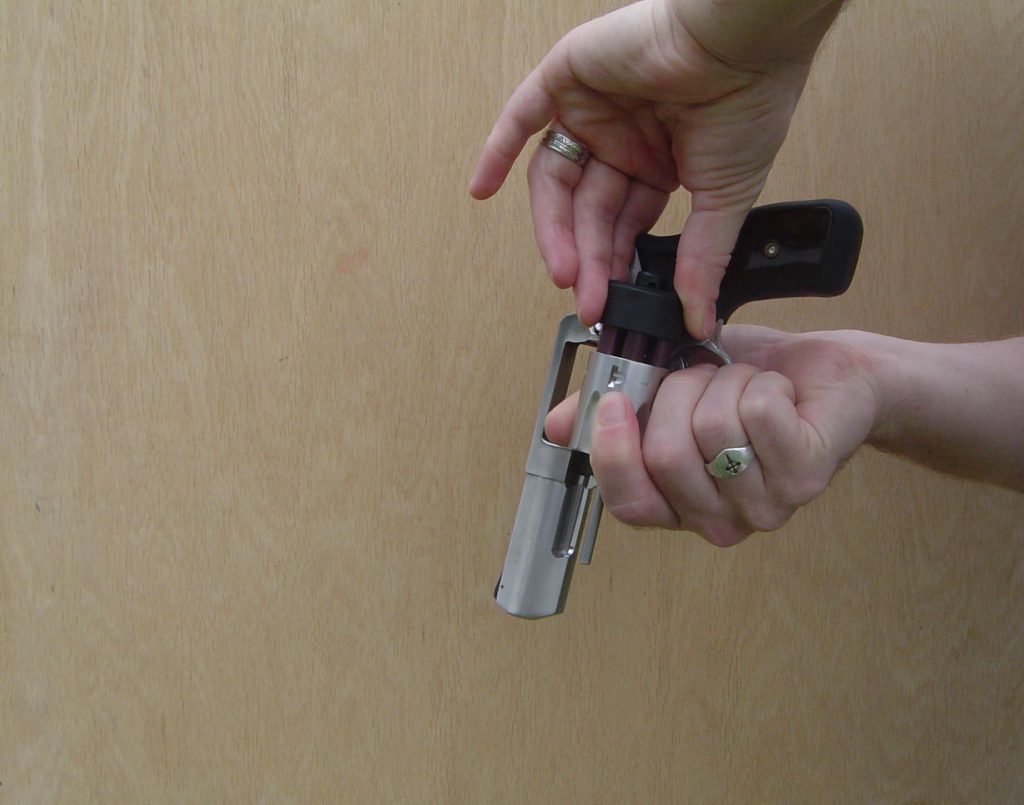
Closing the Cylinder
As mentioned in the previous Left-Handed Revolver Reload post, I prefer to close the cylinder by holding it stationary and rotating the gun into position around it. Grant Cunningham’s wording implies a similar practice when opening the cylinder. I may have picked it up from his book without realizing. This approach reduces the likelihood of changing the gun’s orientation and accidentally dumping your ammo. Simply take hold of the revolver with your left hand using your normal firing grasp and rotate counter-clockwise. Unless you have particularly long thumbs, you should be able to close the cylinder without much fear of trapping your thumb. You are now loaded up and ready to go. Slide your right hand back into position and recommence firing if appropriate.
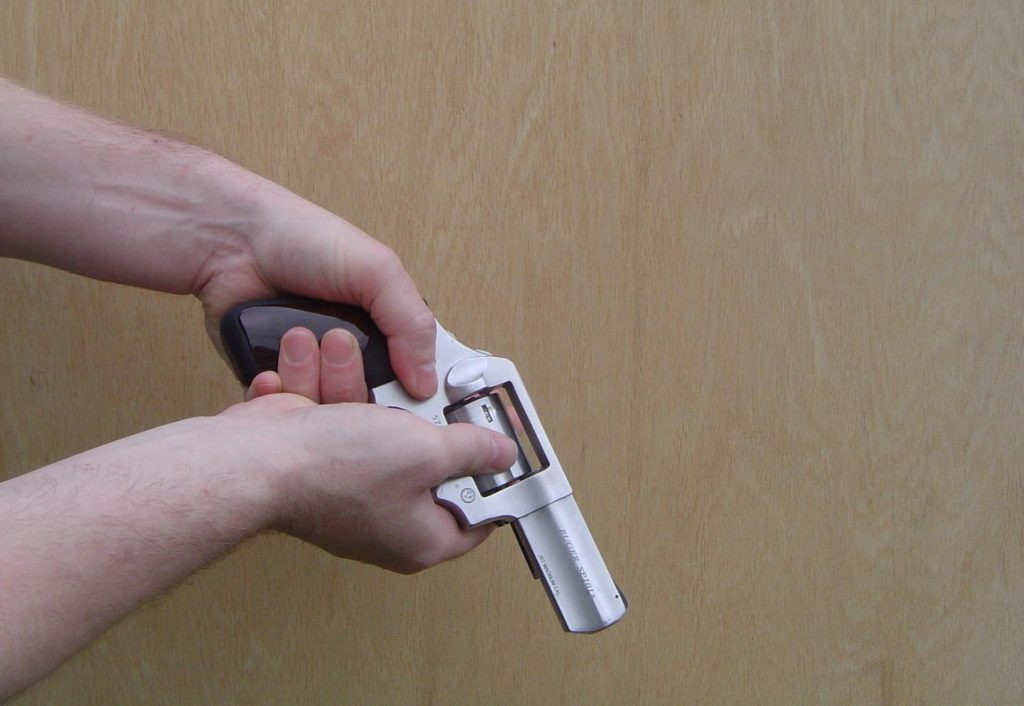
To Each Their Own
It should be noted that this is one solution to reloading a revolver as a left-handed shooter. I find this to be the technique that comes most naturally for me. I also believe it is worthy of consideration by anyone who shoots both revolvers and semi-autos left-handed. That said, each person is different. As mentioned, I have made some alterations to Grant’s technique for my own benefit. Hopefully I have also helped to provide you with some context for your own decisions. The important thing is that you find a method that works well for you. Once you have, use it consistently so that it becomes natural.

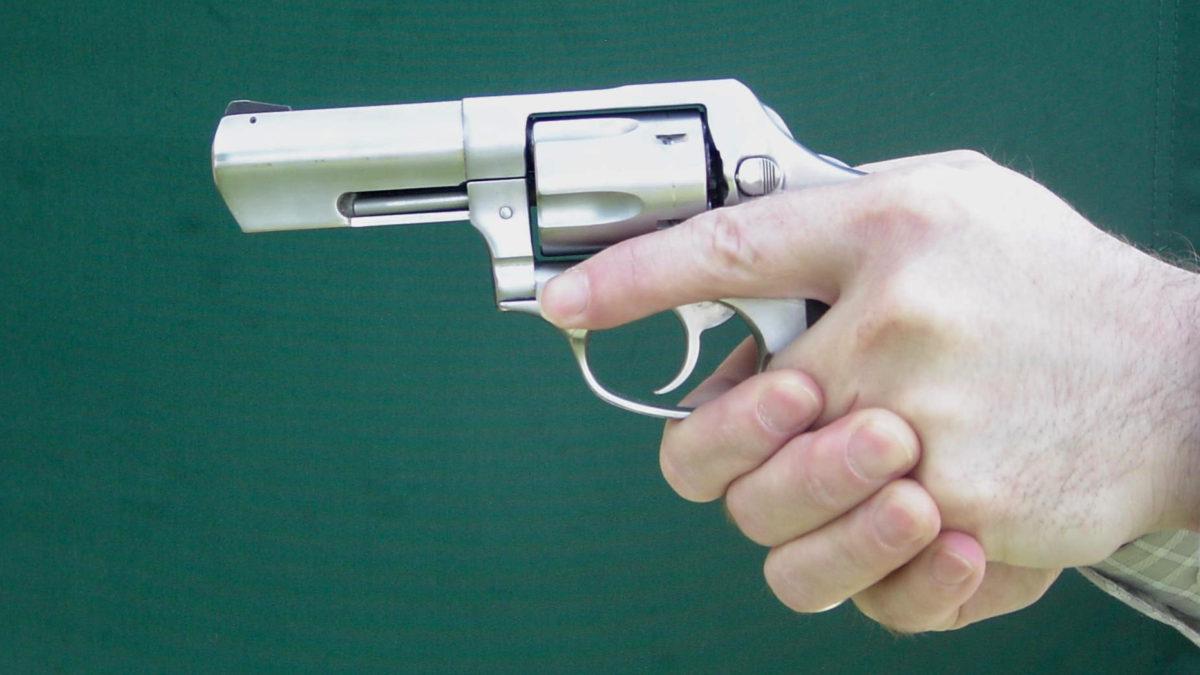
I like the use of the knuckle to release the cylinder! I’ll try it out today.